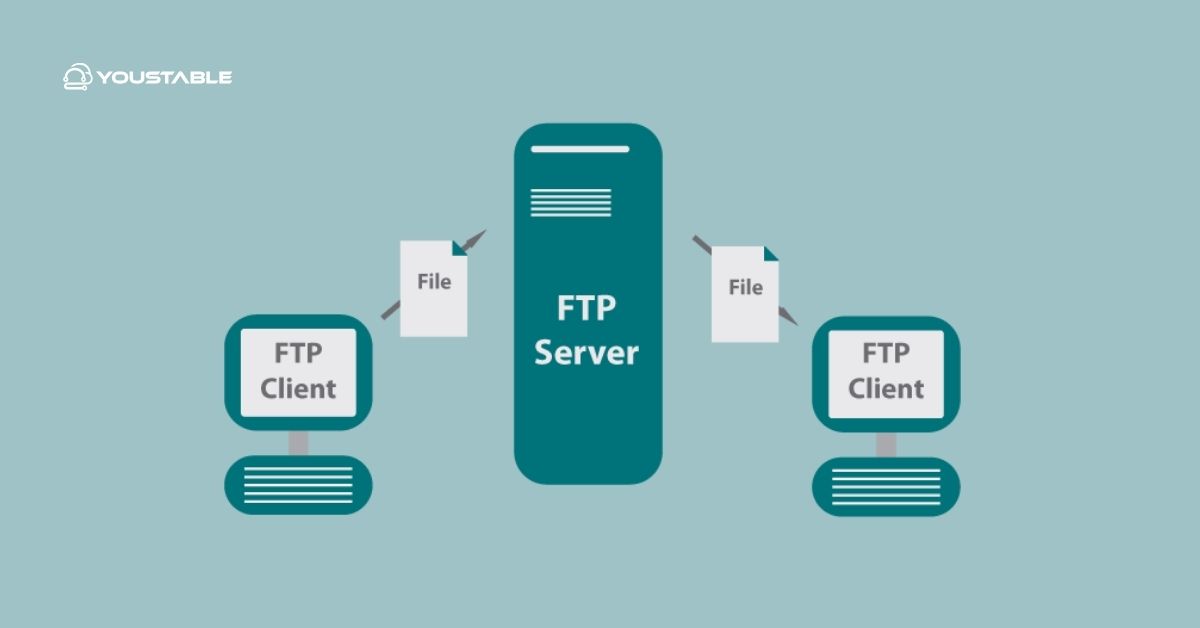FTP (File Transfer Protocol) is one of the most widely used methods for transferring files between a client and a server. It allows users to upload, download, and manage files remotely, making it essential for web hosting, backups, and development environments. Administrators often need to create FTP accounts to enable secure and efficient file access for different users.

In this article, we’ll walk through everything you need to know about FTP on Linux. You’ll learn how to install and create FTP server, configure user access, secure your setup, manage services, and troubleshoot common problems to ensure reliable and safe file transfers.
Prerequisites
Before installing FTP on Linux, make sure your system is ready. Having the right setup ensures a smooth installation without unexpected issues.
- A Linux server (Ubuntu, Debian, CentOS, or RHEL)
- Root or sudo user privileges
- A stable internet connection
- Basic knowledge of terminal commands
Install FTP Server on Linux
FTP servers come in different implementations, but vsftpd (Very Secure FTP Daemon) is the most commonly used for Linux systems. Let’s go through the installation process.
- Updating the System
Always start by updating your package manager to fetch the latest available versions.
sudo apt update && sudo apt upgrade -y # Ubuntu/Debian
sudo yum update -y # CentOS/RHEL - Installing vsftpd FTP Server
Install vsftpd on your Linux system using your distribution’s package manager.
Ubuntu/Debian:
sudo apt install vsftpd -yCentOS/RHEL:
sudo yum install vsftpd -y- Starting and Enabling FTP Service
Once installed, start the FTP service and enable it to run at boot.
sudo systemctl start vsftpd
sudo systemctl enable vsftpd - Verifying FTP Installation
Check the service status to confirm that FTP is running correctly.
sudo systemctl status vsftpd Configuring FTP on Linux
Configuration ensures your FTP server works as expected and meets your security and usability needs.
- Editing FTP Configuration File
The main configuration file for vsftpd is located at:
/etc/vsftpd.confOpen it in a text editor and adjust settings such as enabling local users, anonymous access, or restricting directory access.
- Restarting the FTP Service
After editing the configuration, restart the FTP service to apply changes.
sudo systemctl restart vsftpdSecuring FTP on Linux Server
Since FTP can expose sensitive data, adding security is essential. A secure setup prevents unauthorized access and protects your server.
- Disable Anonymous Login: Prevents unknown users from connecting.
- Enable Local User Access: Allow only authorized users to log in.
- Use FTP over TLS/SSL (FTPS): Encrypts file transfers for better security.
- Restrict User Directory (Chroot Jail): Confines users to their home directories.
- Set Strong Passwords: Weak credentials are a major risk point.
Managing FTP Services on Linux
Routine service management is key to smooth FTP operations. These commands help you handle FTP service efficiently.
- Start FTP Service
sudo systemctl start vsftpd - Stop FTP Service
sudo systemctl stop vsftpd - Restart FTP Service
sudo systemctl restart vsftpd - Enable FTP at Boot
sudo systemctl enable vsftpd - Check Service Status
sudo systemctl status vsftpd Common Issues and Fixes
FTP setup may sometimes face problems. Understanding the common issues helps in quick troubleshooting.
- Connection Refused
- Ensure vsftpd is running.
- Check firewall rules for blocking FTP ports (default 21).
- Login Authentication Failed
- Verify the username and password.
- Ensure local user login is enabled in
vsftpd.conf.
- Passive Mode Issues
- Define a passive port range in
vsftpd.conf. - Open those ports in the firewall.
- Define a passive port range in
By addressing these problems, you can quickly fix FTP issue in Linux and restore smooth file transfer services.
FAQs: Create FTP on Linux Server
How do I create FTP on a Linux server?
To create FTP on a Linux server, install an FTP server package like vsftpd, configure user accounts, set directory permissions, and enable the service. This allows secure file transfer between the client and the server.
Is FTP secure for transferring files on Linux servers?
Basic FTP is not secure because it transmits data in plain text. To enhance security, use FTPS or SFTP, restrict user access, and configure firewalls to protect sensitive information during file transfers.
What are the best practices for FTP security on Linux?
For secure FTP setup, disable anonymous login, use strong passwords, restrict users to their directories (chroot jail), and enable encryption. Regular updates and firewall configurations further strengthen FTP server security on Linux.
Conclusion
Setting up FTP on a Linux server is an essential skill for system administrators and developers. By following this guide, you learned how to install vsftpd, configure access, secure the server, manage services, and troubleshoot common issues. A properly configured FTP server ensures efficient, reliable, and secure file transfers across your infrastructure. For more, visit the official ftp documentation.


